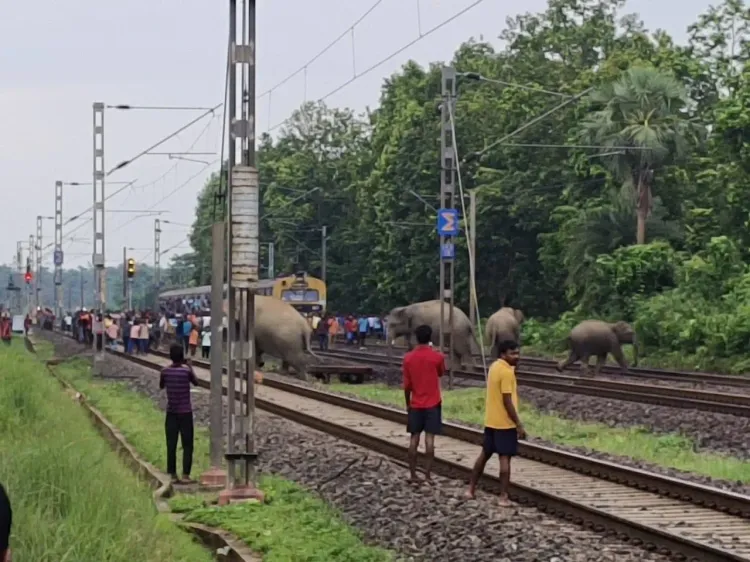Is the Jharkhand-Bengal Elephant Corridor Now a Death Trap?

Synopsis
Key Takeaways
- Seven elephants have died in 45 days.
- Causes include train accidents and electrocution.
- Authorities were alerted but no precautions taken.
- Over 20 elephants have died in the Kolhan division in three years.
- 528 elephants have died from unnatural causes in India in five years.
Jamshedpur, July 18 (NationPress) The once-essential 'Elephant Corridor' linking Jharkhand’s Kolhan division to adjacent West Bengal has transformed into a perilous route for the very animals it was designed to safeguard. Over the last 45 days, a heartbreaking total of seven elephants have lost their lives within a 100 km span due to train collisions, electrocution, and even landmines.
The latest incident unfolded during the night of July 17-18, when three elephants, including two calves and one adult, were tragically struck by the speeding Jan Shatabdi Express close to Banstola railway station in West Bengal’s Jhargram district, which borders Jharkhand’s Ghatsila subdivision.
The elephants were attempting to cross the tracks when the train collided with them around 1 a.m. All three perished instantly. Their mangled remains lay on the railway tracks for several hours, causing significant disruptions on the busy Howrah-Mumbai rail route.
The bodies were finally removed on the following Friday morning using JCB machines, allowing train traffic to resume.
The herd had been spotted in the Banstola forest for several days prior. According to the forest department, railway officials had been alerted about the herd’s presence, but no measures were taken to slow down the trains. On the night of the incident, villagers and forest officials were attempting to guide the elephants away from human settlements using torches when the tragedy occurred.
Jhargram Divisional Forest Officer (DFO) Umar Imam stated that the accident could have been prevented with timely action and improved coordination. “If the train had reduced its speed as warned, the collision might have been avoided,” he remarked.
This incident is part of a troubling pattern in the Jharkhand-Bengal Elephant Corridor. On July 10, a wild elephant was discovered deceased in the Serengasia valley of West Singhbhum district, believed to have been killed by electrocution from live wires laid in a farm field.
On July 5, a six-year-old elephant named Gadru passed away in Saranda Forest after sustaining injuries from an IED explosion set by Maoists. Despite efforts by the Forest Department and wildlife NGO Vantara from Gujarat to save him, he unfortunately succumbed to his injuries.
On June 24, a female elephant died from electrocution in Heaven village under the Chandil Forest range of Seraikela-Kharsawan district after coming into contact with an illegally electrified fence set up by a farmer. An investigation is currently underway.
On June 5, another elephant was found dead in a field near Ambeda in the same forest area, also reportedly due to electrocution.
The rising death toll underscores a growing crisis in Kolhan's forest ecosystem. In the past three years alone, over 20 elephants have died in various regions of the Kolhan division.
Previously, five elephants died due to electrocution in Musabani (East Singhbhum) in November 2023. In July 2024, a female elephant was discovered deceased in Bhadua village of Baharagora.
According to data presented in Parliament, 528 elephants have died from unnatural causes in India over the last five years, with Jharkhand accounting for 30 of those fatalities due to electrocution.









